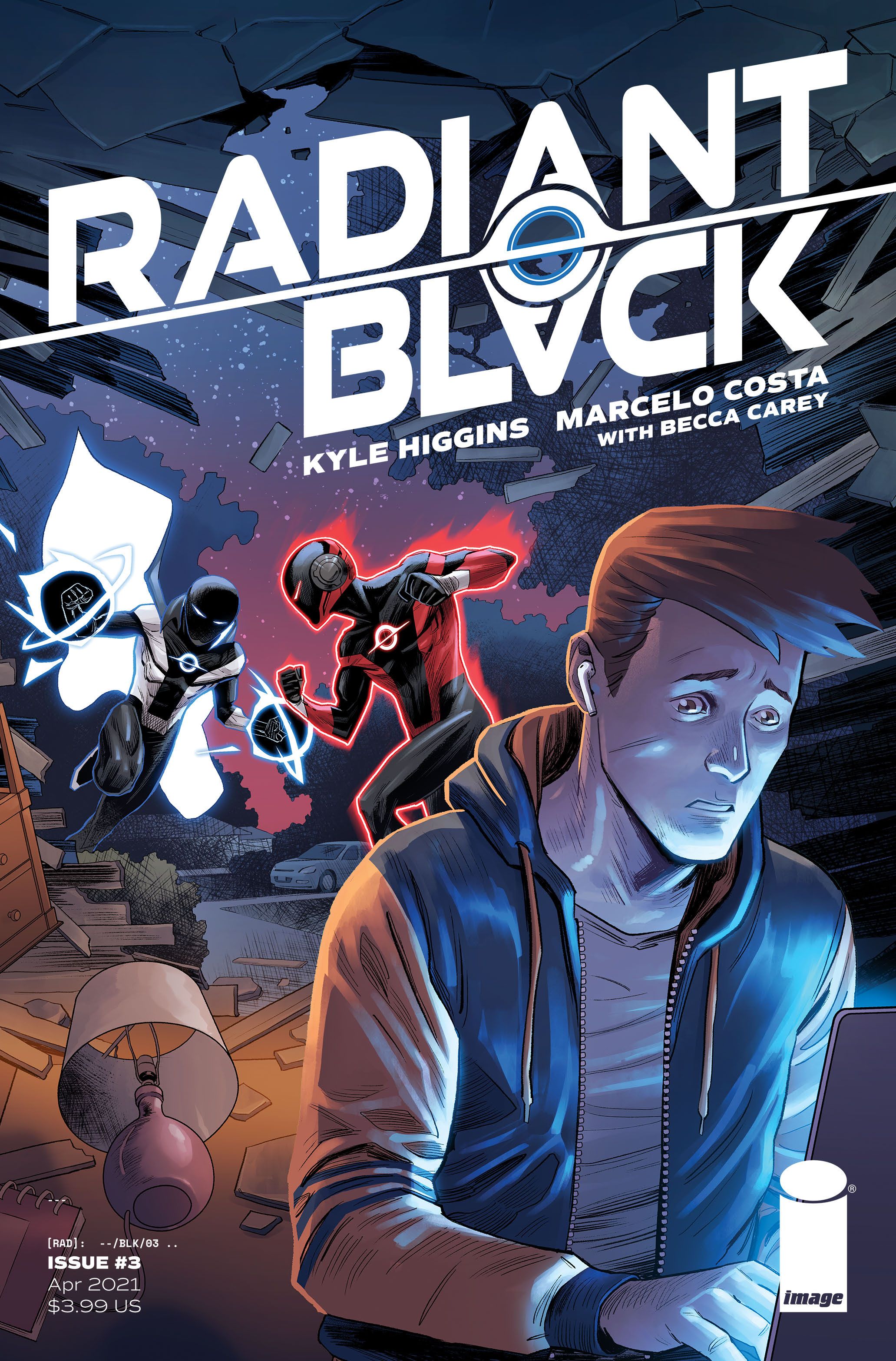Radiant Black #3
- WRITER
- Kyle Higgins
- Artist
- Marcelo Costa
- Letterer
- Becca Carey
- Cover Artist
- Marcelo Costa
- Publisher
- Image Comics
- Price
- 3.99
- Release Date
- 2021-04-21
- Colorist
- Marcelo Costa
The first two issues of Radiant Black, the new superhero series from Image Comics by previous Nightwing and Power Rangers writer Kyle Higgins and artist Marcelo Costa, presented a new spin on the familiar everyman superhero concept. Where similar books like Spider-Man and Invincible are coming of age stories dealing with the travails of high school, Radiant Black follows the struggles of 30-something Nathan Burnett, dealing with familiar millennial struggles like student debt, the failure of grand dreams of youth, and moving back in with parents. The superhero elements have felt fresh with the injection of the millennial experience as well as influence from Japanese tokusatsu. Issue 3 leverages reader’s expectations of the superhero genre to elevate the series with an inventive display of what comics as a medium can do.
Having been forced to move back to his childhood home after the failure of his writing career, Nathan stumbled upon mysterious powers during a night out with his childhood friend Marshall. After foiling a bank robbery and getting into his first supervillain tussle, Nathan is now trying to put the pieces of his life back together and write the novel he has been putting off. This issue follows Nathan’s creative struggle as well as his coming to terms with his new powers.
The issue begins with prose from one of Nathan’s short stories, immediately defying readers’ expectations and sending a message that the issue will be different. The rest follows the main character’s creative journey, presenting snippets of text written and rewritten while Nathan struggles with his own place in life. The personal struggle is entertaining on its own as a character exploration but there are also foreboding elements as Nathan’s new power subtly interjects itself into his thoughts or cuts across the page in stark black and neon. These ominous elements have the effect of making it unclear which thoughts are Nathan’s and which are the mysterious “Radiant” power and raise questions about what that power truly wants.
The collaboration of the comic’s full art and design team is instrumental in bringing this issue’s ambition to life. Marcelo Costa’s expressive art presents the mundanity of writing with a genuine emotional tension through dynamic panel framing and an excellent ability to render emotions through both facial features and body language. Costa balances the in-costume scenes with a playfulness that draws on some of the more light-hearted elements of Japanese toku and delivers the exhilaration and sense of power that American audiences expect from their superhero stories. The issue’s single full-page splash is both funny and emotionally satisfying as Nathan bursts through his creative rut by helping others.
Becca Carey’s lettering and Michael Busuttil’s graphic design are both subtle but important components. Carey’s choices in the word balloons during Nathan’s internal monologue present a genuine tension that the main character seems not to be aware of himself. A strange blue hum hangs around his thoughts, turning jagged at times, seemingly representing the Radiant Black power injecting itself into Nathan’s consciousness. Busuttil’s design work pulls the issue together and even from the credits page the graphic design helps set the tone of the series.
Each of these elements come together to depict the main character as truly emotionally lost. Throughout the issue, Kyle Higgins reflects the millennial experience of powerlessness, a feeling that outside forces have defined what is possible combined with a yearning to break free of those constrictions. Higgins and his collaborators utilize the very form of the medium to constantly push against expectations and conventions to illustrate Nathan's own desire to break free of his constraints. Even the scenes of Radiant Black in action throughout this issue place him in strange situations or force us to question what is real.
Radiant Black continues to prove that it is more than another solid superhero book, but a fresh, ambitious and heartfelt comic with a strong understanding of the medium and its genre roots. Issue 3 offers an excellent character exploration amid ambitious experimentation and strong storytelling. Fans of superheroes, particularly those familiar with Higgins’ franchise-elevating work on Power Rangers, are sure to find plenty to love in this series.

